Seek Blessing Of Lord Buddha At The Ek Phnom Pagoda In 2026
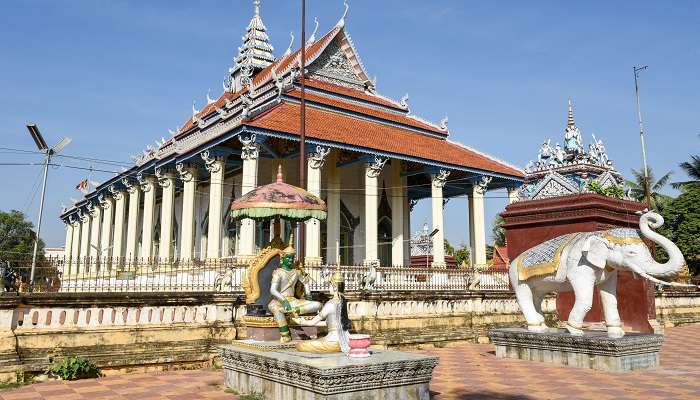
Located in the heart of Battambang, Cambodia, the Ek Phnom Pagoda is a remarkable example of the country’s cultural heritage and spiritual traditions. This ancient Buddhist temple sits atop a green hill, providing visitors with a serene retreat from the bustling city below. The pagoda has beautiful architecture, colourful paintings, and a peaceful feel, welcoming travellers to discover this temple. Read this article to know more about this place.
Ek Phnom Pagoda: An Overview
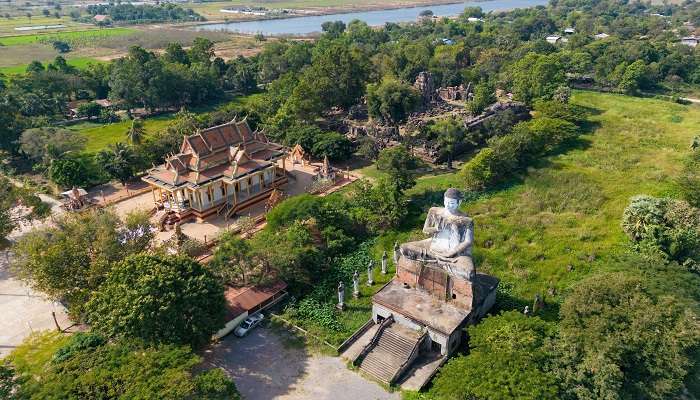
Ek Phnom Pagoda, Cambodia, is a beautiful Angkorian temple. It sits on the left side of the Sangkae River near Prek Daun Taev Creek, northwest of Peam Aek, about 9 Km north of Battambang city in northwest Cambodia. The centrepiece is Wat Ek Phnom, an 11th-century Hindu temple built during the reign of King Suryavarman I. Though partly collapsed and weathered over time, it boasts well-preserved carved lintels and pediments showcasing Hindu imagery.
Adjacent to these ancient ruins, you’ll find a modern Buddhist pagoda known as Ek Phnom. This vibrant addition is home to a large white stone Buddha statue and is surrounded by 18 Bodhi trees, a significant symbol in Buddhism. With its unique blend of ancient and modern, the entire site holds immense cultural importance for Cambodians. It’s a popular pilgrimage and picnic destination, particularly during festive occasions, adding to its allure for tourists.
Must Read: Silk Island Phnom Penh
Architecture Of Ek Phnom Pagoda
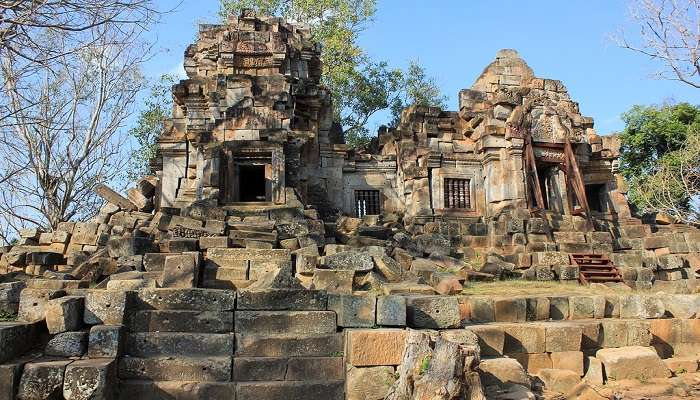
Ek Phnom Pagoda isn’t a single structure but rather a complex with two distinct parts: a new Buddhist pagoda and the ruins of an ancient Hindu temple. The new pagoda is the entrance, marked by a large white-stone sitting Buddha statue and surrounded by 18 Bodhi trees, creating a serene atmosphere. The old Hindu temple was Built during the reign of King Suryavarman I; the temple reflects the Angkorian architectural style. Constructed primarily from sandstone blocks, the complex was once enclosed by a laterite outer wall and a baray (reservoir). While partly collapsed and looted over time, the remaining elements showcase the grandeur of the past.
The most prominent feature is the central tower complex, measuring roughly 52 metres by 49 metres and standing on a raised platform. This complex comprised several smaller prasats (towers) that once dominated the landscape. The main towers stand tall, their upper flanks adorned with intricate bas-reliefs depicting Hindu deities and scenes from epics like Ramayana and Mahabharata. The temple was built on a square foundation with a rectangular layout, reflecting the emphasis on geometric order prevalent in Khmer architecture. Using a raised platform is significant, elevating the sacred space and creating a sense of awe for worshippers. The laterite enclosure wall, a common feature in Angkorian temples, likely served a dual purpose – defining the temple grounds and offering protection.
Ek Phnom Pagoda Timings And Entrance Fees

The pagoda is open daily from 7:00 AM to 7:00 PM, offering ample opportunity to explore its ancient architecture and serene atmosphere. The entrance fee is a very reasonable USD 2, and this single ticket grants you access to Ek Phnom Pagoda and two other captivating sites: Phnom Sampeau and Phnom Banan.
This makes it a great value for budget-conscious travellers who want to experience a variety of historical and cultural attractions. Tickets are conveniently available for purchase at any of these three locations.
Suggested Read: Sisowath Riverside Park
What Is The Best Time To Visit Ek Phnom Pagoda?
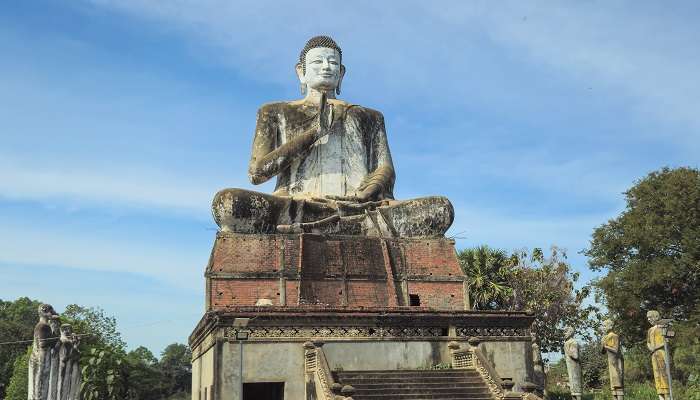
Visiting Ek Phnom Pagoda can be a rich experience if planned at the right time. Some factors to consider for determining the best time to visit:
- Dry Season (October to Early May): Temperatures range from 18°C to 27°C (64°F to 81°F), with mostly sunny skies. This makes it ideal for exploring the temples and other outdoor attractions in comfort.
- Wet Season (Early May to September): The wet season brings higher temperatures (around 25°C to 30°C or 77°F to 86°F) and more humidity. The upside of the wet season is that there are fewer crowds, allowing for a more peaceful visit, and the lush greenery can be a beautiful sight to behold.
- Cambodian New Year (Chaul Chnam Thmey) in mid-April: Visiting during this time allows you to witness local customs and vibrant celebrations, though it might be more crowded.
- Pchum Ben (Ancestors’ Day) in September/October: This 15-day religious festival is significant in Cambodian culture. It’s a unique opportunity to observe the local traditions and rituals performed at the pagoda.
How To Reach Ek Phnom Pagoda?
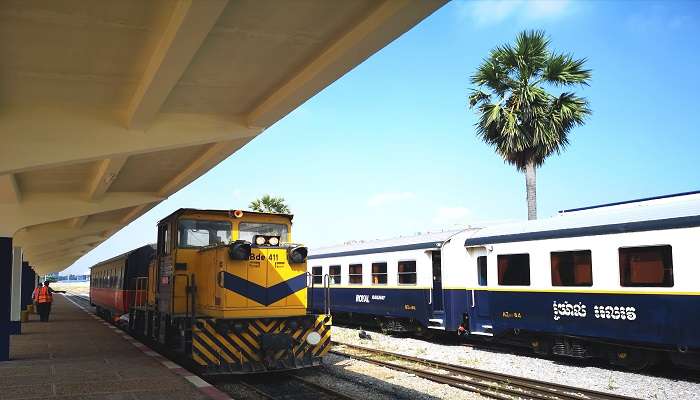
Ek Phnom Pagoda is located about 13 kilometres north of Battambang in Cambodia. Below are various ways to get to Ek Phnom Pagoda:
By Train: Battambang is home to a railway station inaugurated for rail passengers in 1953 and reopened in 2018. The station is conveniently located in the city centre, 800 metres from Battambang’s main market, Psat Nat. There is a daily train service between Phnom Penh and Battambang. Upon arrival at the Battambang train station, you can hire a tuk-tuk or a moto to take you to Ek Phnom Pagoda.
By Plane: The nearest major airport to Battambang is the Siem Reap-Angkor International Airport. This airport is in Siem Reap, Cambodia, approximately 115 km from Battambang. You can opt for a bus or a taxi from Siem Reap to reach Battambang. Once you arrive in Battambang, you can hire a tuk-tuk, a moto, or a taxi to get to Ek Phnom Pagoda.
By Tuk-tuk or Remork: It’s a relatively inexpensive way to get around. Negotiate the price beforehand and agree on a waiting time if you want the driver to wait for you while you explore the ruins.
By Taxi: Taxis are another option, and they may be more comfortable than tuk-tuks, especially if you’re travelling with a group.
By Motorbike: Renting a motorbike is a safe and exciting way to explore the Cambodian countryside at your own pace. Just be sure you have a valid driver’s licence and are comfortable riding a motorbike in a foreign country.
By Road: The Ek Phnom Pagoda is about 9 km north of Battambang city. To reach it, you can go on a road journey from the heart of Battambang. The drive offers a picturesque view of the countryside, with the route lined by palm trees along the Stung Sangker River and passing through quaint villages.
Further Read: Siem Reap Beach
Ek Phnom Pagoda is a true gem in Cambodia’s cultural terrain. It offers a serene and spiritual escape from the hustle and bustle of modern life. Its elaborate carvings, towering structure, and rich history make it a must-visit destination for anyone exploring the wonders of this captivating country. If you’re enchanted by the allure of this ancient pagoda and eager to immerse yourself in Cambodia’s fascinating culture, now is the perfect time to plan your journey. Book your trip to Cambodia today and go on an unforgettable adventure through the heart of the Khmer Empire’s glorious past.
For our editorial codes of conduct and copyright disclaimer, please click here.
Cover Image Source: Shutterstock
Frequently Asked Questions About Ek Phnom Pagoda
What is the history of Wat Ek Phnom?
Wat Ek Phnom is a temple from the Angkorian era, situated in the northwestern region of Cambodia, about 9 km away from Battambang City. This Hindu temple was constructed during the 11th century under the reign of King Suryavarman I. The temple is renowned for its intricately carved lintels and pediments.
What is the history of Battambang?
Established in the 18th century, Battambang served as a significant trading hub between Siam (now Thailand) and Cambodia. In 1794, Siam and a large portion of northwestern Cambodia annexed it. The region was returned to Cambodia in 1907 when it became part of the French Indochina colony. Battambang evolved into Cambodia's second most developed city during the French colonial period, after Phnom Penh.
What is the geography of Battambang?
Battambang, Cambodia's third-largest city, is situated in the country's 'rice bowl' along the Sangkae River, northwest of Phnom Penh. It's a significant agricultural hub. The city is connected to Phnom Penh and the Thai border by road and railway, making it a centre for domestic travel and international trade.
Who was king when Wat Phnom was built?
Wat Phnom, a Buddhist temple in Phnom Penh, was constructed in 1372. The temple was initially built to house four Buddha statues found in a tree floating in a nearby river. Approximately 60 years later, King Ponhea Yat, the last king of the Khmer Empire, relocated to Phnom Penh and ordered the enlargement of the hill and the construction of a wooden temple.
What is the meaning of Phnom?
In the Khmer language, 'Phnom' translates to 'mountain' or 'hill'. It's commonly used in place names in Cambodia, such as Phnom Penh, which translates to 'Penh's Hill' or 'Penh's Mountain'.
People Also Read:
Places To Visit In Cambodia Things To Do In Cambodia 4 Days In Cambodia
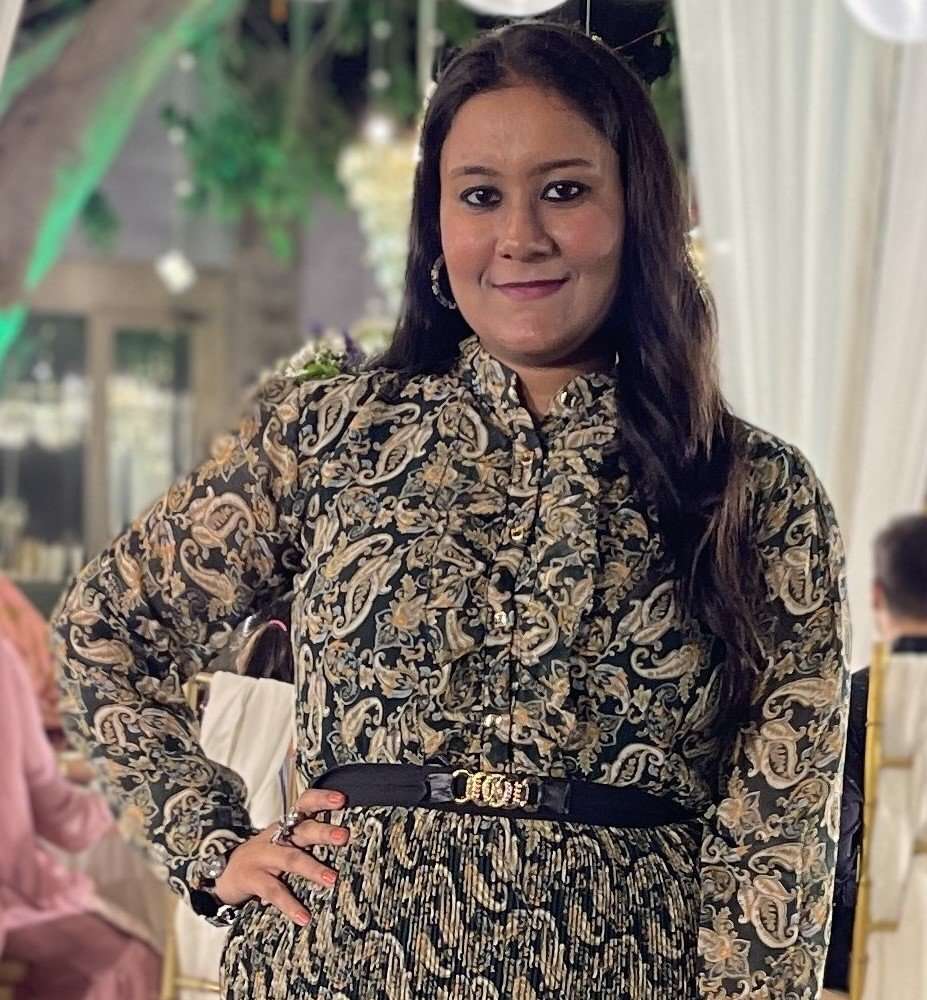
Unveil the hidden treasures of the globe and turn every travel dream into reality. As a Content Writer, I am passionate enough to craft stories from ancient wonders to modern marvels. My words paint the picture-perfect itinerary for unforgettable experiences. Let my words be your trusted guide to immerse in the diverse culture and discover the beauty of the unknown.











